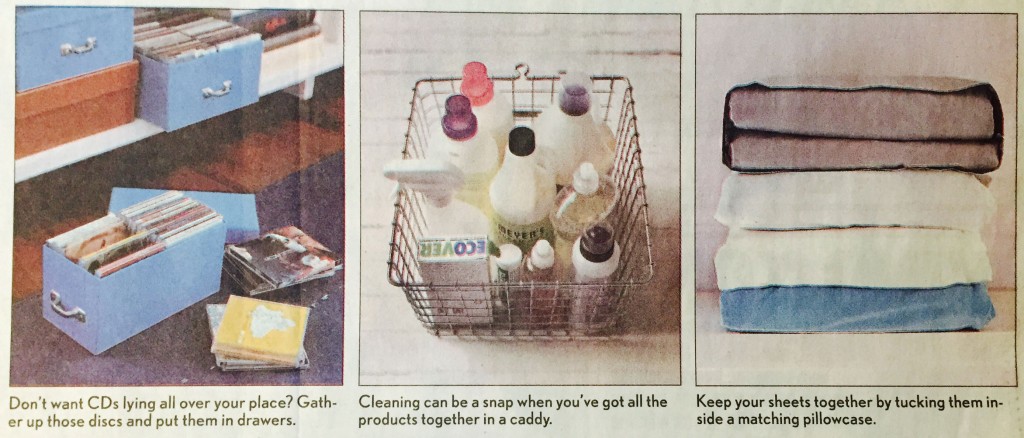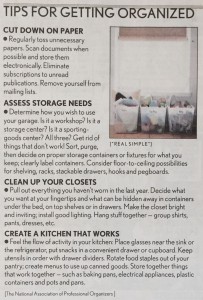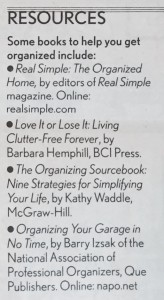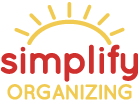
A Call to Order – The New Year is a Great Time to Get Organized
By Carl Schoettler
CLUTTER, DISORDER, DISARRAY
Complete Article
A desk inundated by papers last examined in 1998. Books stacked beyond recall by the Dewey Decimal System. John Coltrane CDs “filed” next to Vivaldi. Forgotten substances stored at the back of the refrigerator. Closets stuffed with stuff unworn since the Nehru-collar era. Pantry and garage indescribable to ordinary mortals.
Perhaps you, as I do, face this new year threatened by the dreaded syndrome Chronic Disorganization. I sought professional help. January is, after all, Get Organized Month.
For those like us, there are endless resources to call on, from magazines to books to helpful Web sites. But to really understand what getting organized takes, I decided to start at the top. I called Barry Izsak, president of the National Association of Professional Organizers, in Austin, Texas.
Izsak’s counsel, of course: Hire a professional organizer. There are 3,500 in 24 NAPO chapters, probably 150 or more in Maryland, Washington and Washington’s Virginia suburbs. But there are some things you can do without professional help.
“Break the task into small, manageable pieces,” Izsak says, with the firm, didactic tone of a stern schoolteacher. “You need to focus in on one small piece, whether it’s the medicine cabinet in the bathroom, or the bathroom itself, if it’s small, or the CDs in your office.”
Select an area to begin, then remove items from the area so you have room to work.
“You then need to sort the items,” Izsak says. “Make the easy decisions first. The obvious: Things that are broken. Things that are incredibly old. Things that are no longer useful. Remove … sort …get rid of the things you don’t need.”
Next, he says, “Select a `home.’ ” In organizing, that means the natural place to put stuff.
“This could either be the place that you remove the items from, or a new home you create in a different area. Containerize the items if you need to, if it would help them stay together better. Then replace the item. That’s the process in a nutshell.”
Oftentimes, Izsak says, “Clients ask me where should I put this. The answer is, where you would you go look for it. … You want to store things near where you’re going to use them.”
He says you should ask yourself lots of questions as you go through the process of whether you should keep something or not: When was the last time you used it? Is it still useful and relevant? In good working condition? Is there a logical place and enough space to keep it?
“And my favorite question,” he says: “What’s the worst thing that’s going to happen if you get rid of it? And if you can live with your answer, get rid of it.”
Like many professional organizers, Izsak sometimes sounds like a psychotherapist.
“Contrary to what people believe,” he says, “being organized is not an inherited trait. It’s a learned behavior. … Unfortunately, most people were never taught. They don’t know how to do it.”
The ultimate goal, he says, ” is not the organization.
The ultimate goal is to be more productive. And to alleviate stress. And to save time and … money.”
ORGANIZED, NOT “NEAT”

A variety of containers can help you set up a closet where everything’s neatly in place. (All photos by Anne-Michelle Gallero, from “Real Simple: The Organized Home Book”)
Amy Rehkemper, the founder and owner of Simplify Organizing Services in Towson, grew up in a family where organization not only wasn’t taught, it was ignored.
“I had a beautiful childhood,” she says. “But it was cluttered.”
She rebelled by getting organized. She’s been a professional since June 1999. Some organizers work from a designer-architectural standpoint — the creation of pristine rooms like those in Martha Stewart’s Living or Real Simple magazine. Rehkemper is more permissive.
“A lot of people confuse being neat and being organized. [They’re] not the same thing,” she says.”Organization means something different to every single person,” she says. “So when I go into a client’s home I don’t touch anything, I don’t do any hands-on organizing until I have spoken with you and really understood what’s your style, what are your needs, what are your habits.”
Then she begins to sound as firm as Izsak, but like a kindly, cheerful, good organizer cop. “Getting organized is about finding what you need when you need it,” she says. “It’s not necessarily that the place looks pretty.”
Rehkemper founded the Maryland Association of Professional Organizers in 2001 and was its first president. Membership fluctuates between 35 and 40. (MAPO is not affiliated with NAPO.)
IN THE COMMUNITY
She’s led MAPO on pro bono expeditions to organize the tool room for Habitat for Humanity and storage and food stocks for the House of Ruth. And they’ve just rearranged some jumbled rooms at Baltimore’s Collington Elementary School.
And Rehkemper has finally organized parts of her childhood home. “Slowly but surely,” she says.
 Scott Roewer of Solutions-by-Scott practices organizing in Washington.
Scott Roewer of Solutions-by-Scott practices organizing in Washington.
“We have a lot of people who move into D.C. who’ve lived in large Midwest homes and have to figure out how to downsize,” he says. “They bring all their clutter that they’ve had forever with them.”
Disorganization is like snow, he says. It piles up until you do something about it.
“We work with people side-by-side,” he says. “We help them make the decisions they need to go through the piles of paper, the attic, the garage, the boxes that were sometimes not unpacked from the last move. We help them adapt to changing their habits so they don’t re-bury themselves.”
He’s organized everything from nurseries to law offices, but he loves to work on closets. So far he’s never found any of the skeletons said to reside in many Washington closets.
“No,” he says. “Thank goodness.”
He wouldn’t tell anyway. A professional organizer in Washington must have the discretion of a CIA agent.
“We have standards of conduct we follow,” he says, a bit stiffly. “And everything is confidential.”


